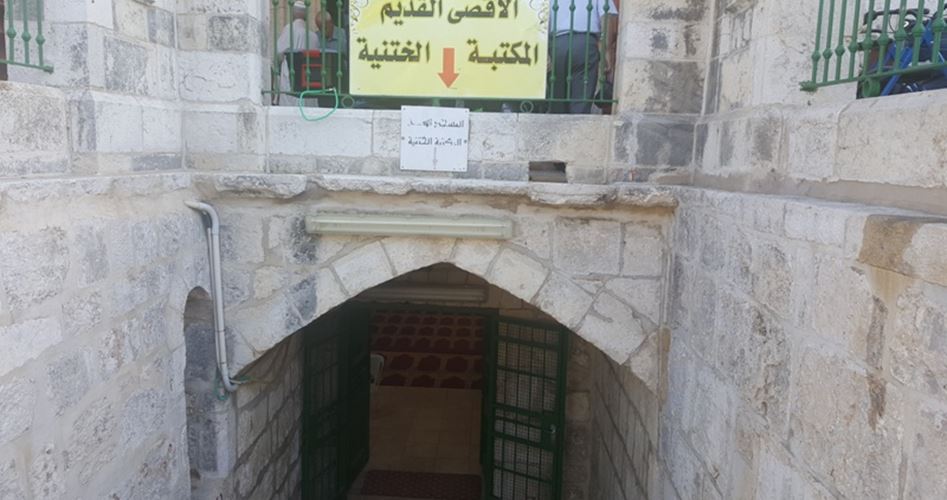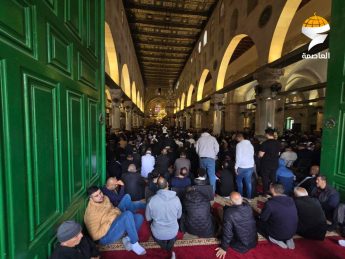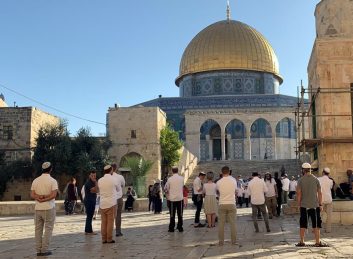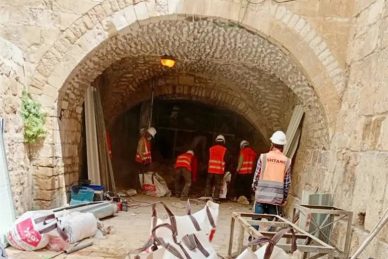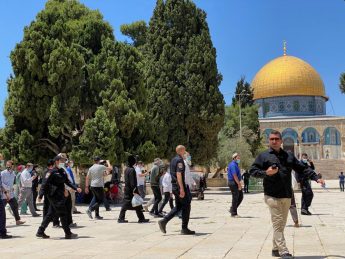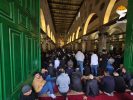The ancient Aqsa has a great historical and religious value and it is an important archaeological landmark at Al-Aqsa Mosque. It was built by the Umayyads and became a cultural landmark for visitors.
Director of the Department of Tourism and Antiquities at Al-Aqsa Mosque Dr. Yousef Al-Natsheh sheds light on the status of the ancient Aqsa Mosque and its importance. He says: “The ancient Aqsa could be reached before reaching the center space leading to Al-Aqsa Mosque where stone stairs could be spotted leading to a gate that leads to the ancient Aqsa.”
Natsheh adds to the PIC “The ancient Aqsa is an area that stretches from the north to the south (of the Aqsa compound) located at the bottom of the middle the arch structures of Al-Aqsa Mosque meaning that the ancient Aqsa occupies an area under Al-Aqsa Mosque; Its level to the ground is lower as 18 stairs lead to it compared to the entrance of Al-Aqsa Mosque. The slope of the ancient Aqsa continues to go lower as the visitor progresses towards the south. The ancient Aqsa slopes lower at two points one just down the entrance and another at the end of the corridor or the eastern arch structures of the ancient Aqsa; it is necessary to go to the west a little to climb down eight more stairs.”
He added “This slope is part of the nature of the place its layout and its architectural elements and explains what this site is about. It is a gate leading to two long corridors leading to Al-Aqsa Mosque. This section is known as the Prophet’s Gate in the Arabic literature and the double gate in Western literature.”
Area planning
“The roof of the two corridors joined by a shallow half-barrel vault is standing on a series of three rows of semicircular corridors stretching from the south to the north. The stones of these corridors are large and polished and the openings of the corridors were mostly blocked for reinforcement and support. At the entrance of the gate there are huge steps and great columns. The area next to the gate is called Zain’s space which is decorated with four shallow domes. In this section there are a large number of granite columns and a modern concrete pillar to strengthen and support the roof.”
The founder
Dr. Natsheh refers to the founder and builder of ancient Aqsa according to Nasser Khusraw as Suleiman the son of David peace be upon them because according to his opinion one can’t believe how a human power would transfer these stones and use them. It is beyond the power of men and it was Suleiman who God gave this power.”
Natsheh adds that it appears that the origin of this part of Al-Aqsa is Roman which was also suggested by Mujir al-Din when he spoke about the place as an old building of the Romans. Some specialists believe it goes back to the period of Herod (374 BC) and it seems to have been demolished during the Titus’ campaign in the year 70 AD. It was later neglected and remained without care until Abdul Malik bin Marwan (an Umayyad Caliph) renovated Al-Aqsa Mosque by using available materials and elements provided they do not conflict with the values of Islam.
The ancient Aqsa served as a corridor for the caliphs of The Umayyad leading to their palaces located behind the Qibli Mosque to the south of the wall of Al-Aqsa Mosque. The existing building dates back to the Umayyad period and is used as the headquarters of the Library of Al-Aqsa Mosque which was renovated by Al-Aqsa Renovation Committee in 1998.”
At the northern entrance of the ancient mosque there is a small room that was used by guards. There is also a larger room located at the entrance of the double gate to the south. It was also used by guards. It contains a niche and a deep water-well that is empty and closed now.

